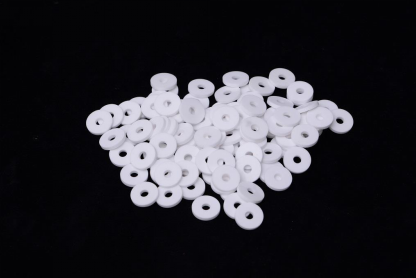Alumina is the most flexible and inexpensive material in oxides with melting point over 2000 ℃. Alumina ceramics are the most widely used, most widely used and most productive ceramic materials in oxide ceramics.
Brief Introduction of Alumina Ceramics
According to the research, there are 12 kinds of homogeneous polycrystalline variants, but there are mainly 3 kinds of polycrystalline variants, i.e.,and, which are widely used. The structures of these three kinds of crystals are different, so their properties are quite different.
-is a trigonal system with the closest structure, low chemical activity, good high temperature stability, excellent electrical and mechanical properties.
-is a high content of polyaluminate minerals, its chemical composition contains a certain amount of alkaline earth metal oxides and alkaline metal oxides, and can also exhibit ionic conduction.
-Spinel cubic structure. It is unstable at high temperature and has poor mechanical and electrical properties. However, it has higher specific surface area and stronger chemical activity, and can be used as adsorption material after technical improvement.

II. Application of alumina ceramics
Mechanical aspect
The bending strength of sintered porcelain can reach 250MPa, and that of hot-pressed porcelain can reach 500MPa. The Mohs hardness of ceramics can reach 9, and the ceramics have excellent abrasion resistance, so they are widely used to manufacture tools, ball valves, grinding wheels, ceramic nails, bearings, etc. Among them, ceramic tools and industrial valves are the most widely used.




